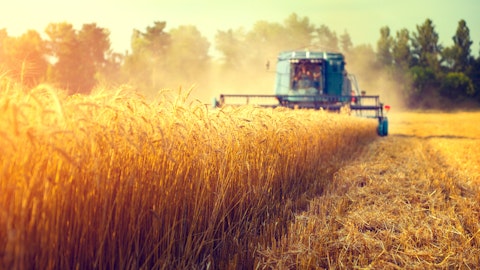This brief article will cover the top 8 most produced crops globally to see which staple crops drive the world’s food chain. To get more insights on the advanced AgTech sector, read 20 Most Grown Crops In The World.
8. Tomatoes
Production Quantity In 2021/2022 Crop Year: 256 million tons
China, India, and the United States are the main growers of tomatoes. The crop is consumed raw and processed to make other products, so naturally, it is a cornerstone of global gastronomy. The processing industry for sauces and pastes has witnessed steady growth and emphasizes quality and flavor profiles. Factors like yield, shelf life, and consumer preferences for organic or specific varieties influence market dynamics for tomatoes.
7. Sugar Beet
Production Quantity In 2021/2022 Crop Year: 278 million tons
Sugar beet is the primary source of sugar in temperate climates, so it is cultivated in Russia, France, and the United States. Once harvested, the beet undergoes processing to extract sugar, while its residue and beet pulp are used as animal feed. The sugar derived competes with cane sugar in the global market. The industry also explores sugar beet for bioenergy production, like bioethanol. The sugar beet sector adapts by researching sustainable farming techniques as health concerns steer consumers towards alternative sweeteners.
6. Cassava
Production Quantity In 2021/2022 Crop Year: 319 million tons
Cassava is a drought-tolerant root crop that is fundamental to food security in many tropical countries. Nigeria and Brazil are its biggest producers, where its starchy roots serve as the main calorie source for over half a billion people. The crop is consumed directly or processed into products like flour, tapioca, and starch. Cassava also has potential for biofuel production and is gaining traction. Notably, the cassava industry faces struggles like post-harvest deterioration and pests.
5. Soybean
Production Quantity In 2021/2022 Crop Year: 388.09 million tons
The leguminous seeds of soybeans find their primary cultivation bases in the United States, Brazil, and Argentina. The crop plays dual roles: as a source of protein in tofu, soymilk, and meat alternatives and as an oilseed, giving rise to edible oils and industrial products. As meat alternatives are gaining popularity, soybean demand is also rising.
4. Wheat
Production Quantity In 2021/2022 Crop Year: 907.82 million tons
Wheat is a staple grain for over 2.5 billion people and is foundational to diets in numerous cultures. China, India, and Russia are the biggest wheat producing countries because of their vast cultivation landscape. Since wheat is a major traded commodity, its pricing impacts global food inflation metrics. Also, there’s a growing market for different wheat varieties, like ancient grains, with rising health-conscious consumer bases.
3. Rice
Production Quantity In 2021/2022 Crop Year: 1 billion tons
Rice is a staple food crop for nearly half the world’s population, and Asia dominates its production. The crop is grown in rice paddies which are iconic in the agricultural landscapes of Thailand and Vietnam (also noteworthy exporters in the global market). The rice industry also has sustainability challenges like hefty water usage and methane emissions.
2. Corn
Production Quantity In 2021/2022 Crop Year: 1.4 billion tons
Corn or maize stands tall as one of the most grown crops in the world. The United States, China, and Brazil are the biggest corn cultivators that make it accessible for human consumption and livestock feed. Other roles of corn are ethanol production and the manufacturing of bioplastics. Research into genetically modified (GM) maize varieties to boost yields and resistance is also crucial.
1. Sugarcane
Production Quantity In 2021/2022 Crop Year: 1.966 billion tons
Sugarcane is the main source of sugar in many parts of the world. Currently, Brazil, India, and China record the biggest sugarcane yields. Also, Brazil shows a dual focus on sugar and ethanol, a biofuel, showcasing the crop’s multifaceted industrial potential. The sugarcane industry is closely tied to global sugar prices, energy policies, and environmental concerns, given its water-intensive nature.
Get the latest in finance, insider tips, and investment strategies delivered straight to your inbox. Don’t let opportunities pass you by, and become an insider today by adding your email address below. Learn more about the main stakeholders in staple crops by reading 20 Countries That Produce the Most Wheat and Top 20 Rice Producing Countries In The World.





